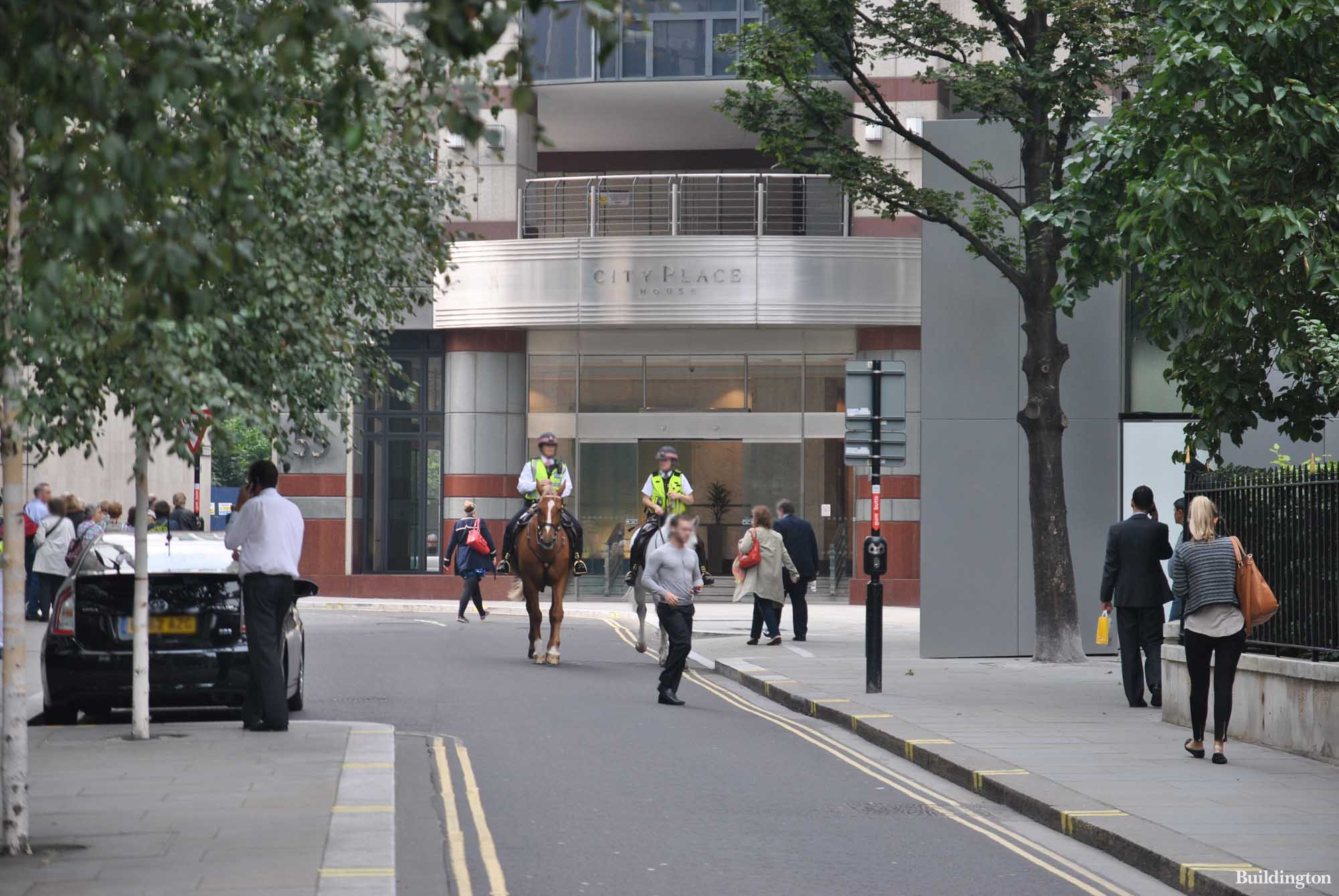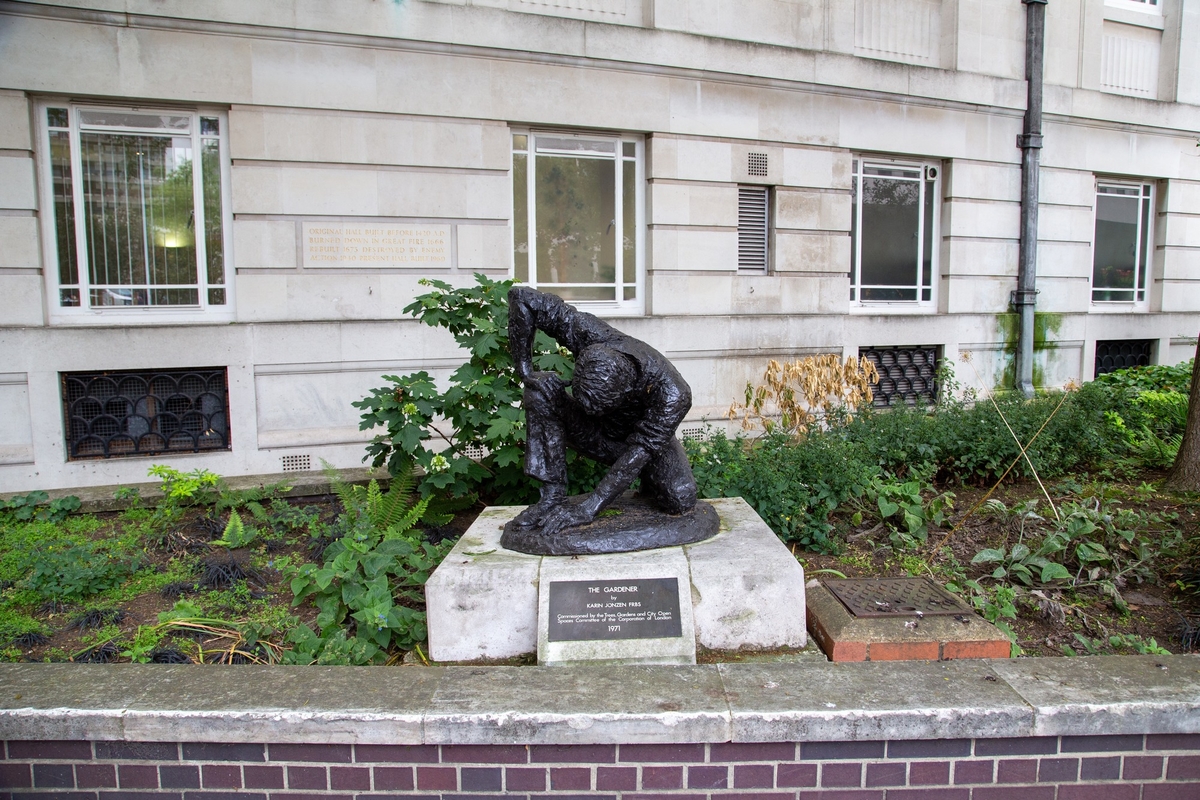Continued from
988 Restaurants near London Wall, London EC2Y 5AU
Turn right toward Aldermanbury Square
The remains of London’s Roman Fort which dates back to soon after the Roman invasion of Britain. London became the most important city in Roman Britain, and the fort could house up to 1,000 soldiers over a space of 5 hectares.
Turn left onto Aldermanbury Square
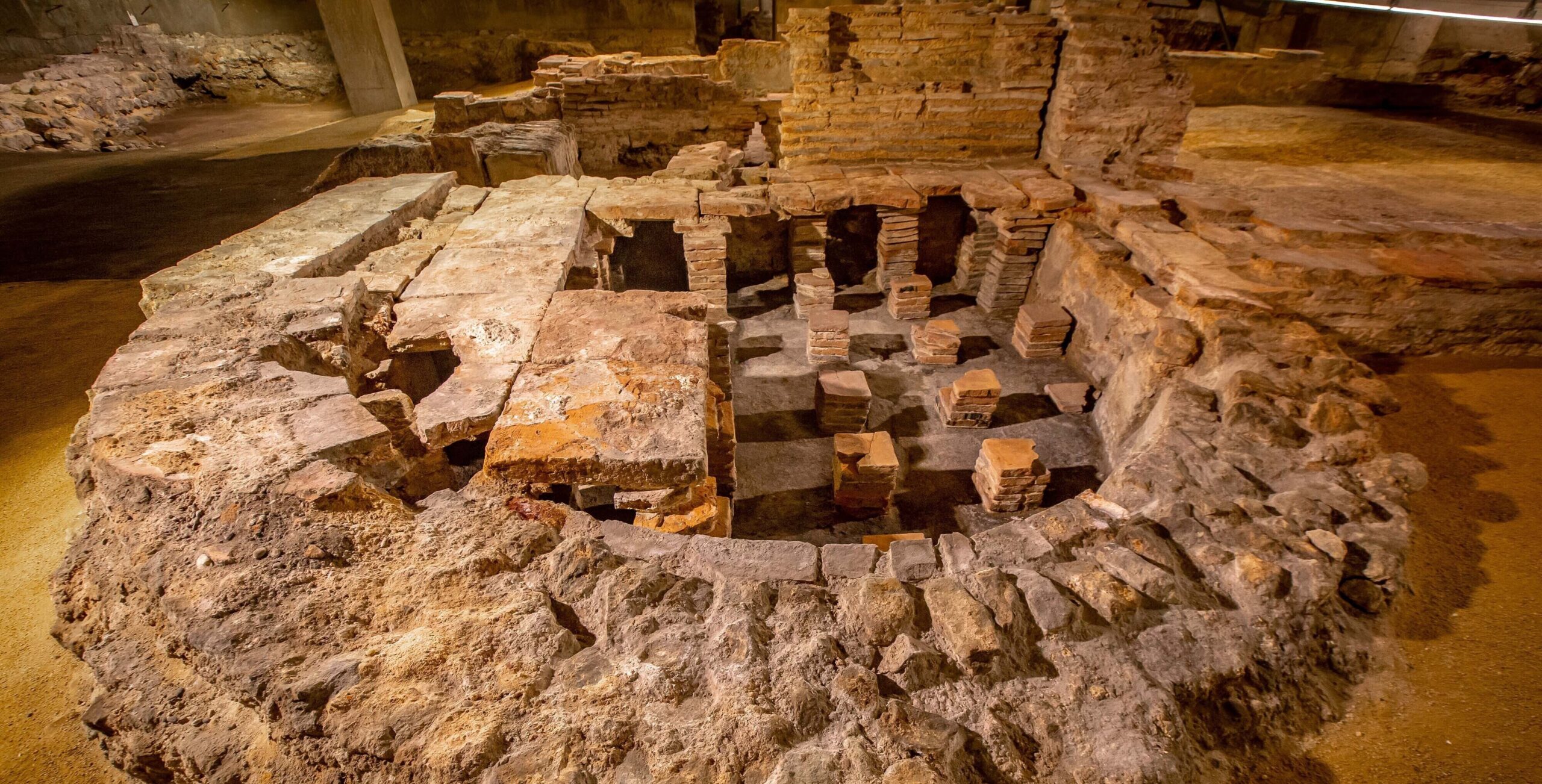
Visiting Roman ruins hidden under a London street
It was built at around the same time as the forts around Hadrian’s Wall, and therefore shares a similar design with these northern counterparts. The stone walls of the fort in London rose to a height of over five meters, (around 16 feet) and were reinforced by an urban bank at the rear. At the front of the wall was a ditch (again, a common feature of the time) and there were stone towers placed at even locations along the walls.
Roman Londinium – AD 47
Turn right onto London Wall/A1211
About London Roman Fort
Although the Roman fort in London was around three times the size of its Hadrian Wall counterparts, it never housed a permanent regiment, but was the home of the ceremonial guard that served the governor of Britain, and saw a regular rotation of soldiers,
BRUTAL Life of a Roman Legionary
Barbican, London EC2Y 5AU, UK
Head west on London Wall/A1211 toward Brewers’ Hall Garden
The fort itself was dissected by two main thoroughfares; one ran west-to-east and one ran south-to-north. The administrative buildings were thought to be in the middle of the fort (but we don’t know for sure as no remains of these building have ever been found) and the south, east and west sides of the fort traditionally would have housed the soldier’s barracks and support buildings. The north side of the fort was thought to have been completely free of buildings, and instead was used as a parade ground.
Roman Fort of Londinium
Turn left onto Noble St
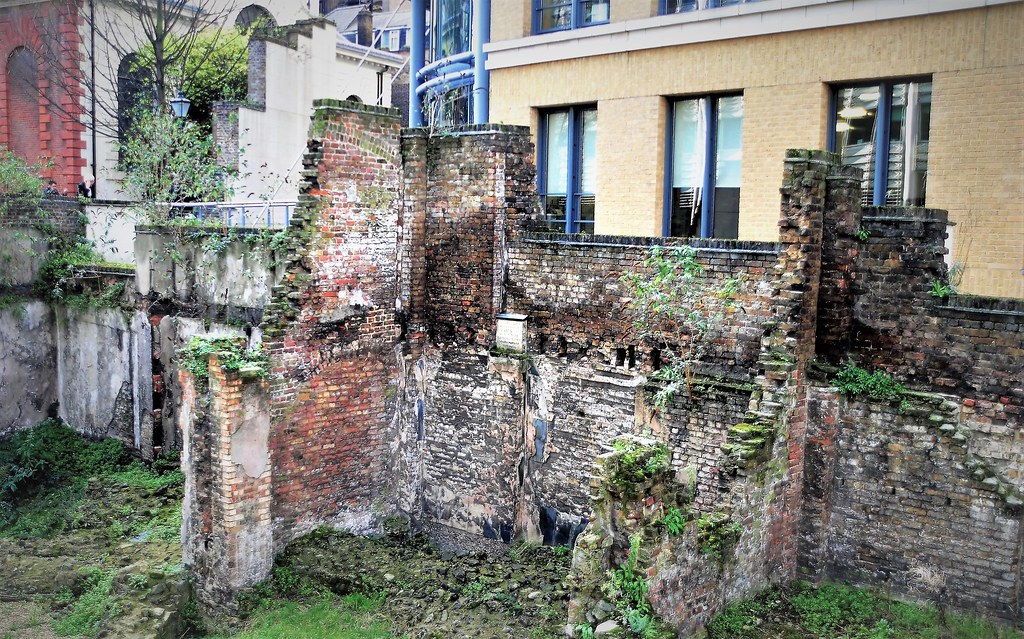
The only remains of the fort that can still be visited today are of the western gateway. This is where the west-to-east thoroughfare would have entered the fort, and the remains of the turret and guardroom – as well as the gateway itself – can still be seen.
Roman Fort Ruins
3 Noble St, Barbican, London EC2V 7EE, United Kingdom
The poet John Betjeman had a home in Cloth Fair from 1955. He moved out in 1977, when he had finally had enough of the din of Smithfield’s juggernauts.
It was the play area of London, a place where jousting and tournaments took place.
During the reign of Mary Tudor, some 200 were burnt here for their religious beliefs and opinions.
The true story of the Smithfield martyrs
Head south on Noble St toward Oat Ln
It was also the location for Bartholomew Fair – an annual three day fair established in 1133 by the nearby monastery of St Bartholomew. Originally for merchants trading in cloth and eventually the biggest cloth fair in the country. Over the centuries entertainments and side shows took over from the trading. and it lasted for 700 years, ending in 1855 due violence, drunken participants and debauchery.
The fair was brought back in 2023 BUT:
Corporation unlikely to fund Bartholomew Fair again
Turn left onto Oat Lane
Sir Horace Jones, the City Architect, Deisgned the New Smithfield Market Buildings in the 1860s. He carried out the task so well that he later went on to designed both Billingsgate and Leadenhall markets But you might know a Non Building he designed better– Tower Bridge.
HIDDEN GEMS OF WEST SMITHFIELD
Turn left onto St Alban’s
 Smithfield Meat Market, London, UK. Image: Jorge Royan
Smithfield Meat Market, London, UK. Image: Jorge Royan
Soon to be married male ‘bumarees’ (that’s Smithfield porters) are likely to suffer an area tradition of being stripped to their birthday suit, then covered from head to toe in flour below the market clock. Or so Smithfield veteran, Biffo,says. Maybe he was just making that up-a story that’s just to impress the dumb Yanks–to be taken with a pinch of salt (or flour). But then there was something similar on a BBC documentary with an even messier initiation ceremony for new market boys. Here, newbies are carried into a stock trolley, stripped naked, covered with eggs, flour, offal (that’s poop for the less initiated) and any other rotten matter available to their initiaters. The poor newbie is then left in the trolley for a while to be further embarrassed by gawping strangers and even a friend or two. Welcome to Smithfield.
5 Secrets Of Smithfield Market

A change in clientele at some of Smithfield’s watering holes has occurred lately. Bleary eyed and bloody attired market workers are being replaced by high flying city types. The market’s own Cock Tavern, a favourite haunt of bumarees in the past, closed in 2010, and is now an exotic cocktail bar called Oriole, where you can purchase fancy mixes such as the Makassar Strait or the Nanjing Cooler for £14. Compare that to the The Cock that used to do an all you can eat breakfast buffet for £5.99. But notice they kept the bird names!
Things to Do near Smithfield Market
Turn left onto Wood St
It’s not always just the meat that’s been butchered at Smithfield. In 1853 Max Schlesinger described in his book, Saunterings In and About London, that the surrounding streets were hotbeds of poverty and crime: “On market-days the passengers are in danger of being run over, trampled down, or tossed up by the drivers or “beasts”; at night, rapine and murder prowl in the lanes and alleys in the vicinity.” Things got so bad that it sometimes got so out of hand, that the market was provided with its own police force and police station. They still exist today — well, sort of. The market also has a constabulary — as does Billingsgate and New Spitalfields
The Reputed Plague Pits of London
Turn left onto St Giles Terrace
Turn right onto Barbican Highwalk/Gilbert Bridge
 Map of the main buildings of the Smithfield Market complex: the Poultry Market is B (purple)
Map of the main buildings of the Smithfield Market complex: the Poultry Market is B (purple)
The market experienced significant damage during the Blitz. However, it was after the war in 1958, that the original Poultry Market building was destroyed by a major fire. £2m was put aside for a new building, which was completed in 1963. At the time, the roof of the building was the largest clear spanning dome roof in Europe — not to mention the largest shell concrete structure in Europe. It’s also oddly beautiful to look at — like the ceilings of one of those ancient Turkish baths. (You can’t really see the dome from outside.)
4K London Walk – Farringdon and Smithfield Market
Turn lef
From monks to meat markets: the religious history of Smithfield
Take Smithfield Market for example. It is an historic site which has been a cattle market for 865 years and which after the relocation of Billingsgate Fish market, Covent Garden and Spitalfields markets is still in charge of its own destiny today
As such it is a heritage site, and with so many historical important places being demolished in London today – ergo the London Wool and fruit exchange in Shoreditch – visitors and locals are urged to treasure its very existence.
Museum of London begins move of 10,000 objects to new home
Turn right
33 ft
Walk for 82 ft
82 ft
unwashed, unshaven, squalid and dirty figures ….a stunning and bewildering scene which quite confounded the senses
– Charles Dicken
SMITHFIELD – OLIVER TWIST
We’ll eat dinner in this area and then take the subway opps tube home
Head west
82 ft
Away from Smithfield legacy of blood and gore, the market was also the site of another unenviable practice. Wife selling in England was a way of ending an unsatisfactory marriage by mutual agreement that probably began in the late 17th century, when divorce was a practical impossibility for all but the very wealthiest. Smithfield Market became a main point of exchange where these unhappy women could be desposed of by their heartless spouses. After parading his wife with a halter around her neck, arm, or waist, a husband would publicly auction her to the highest bidder. Although the custom had no basis in law and frequently resulted in prosecution, particularly from the mid-19th century onwards, the attitude of the authorities was equivocal.
Restaurants near Smithfield Market
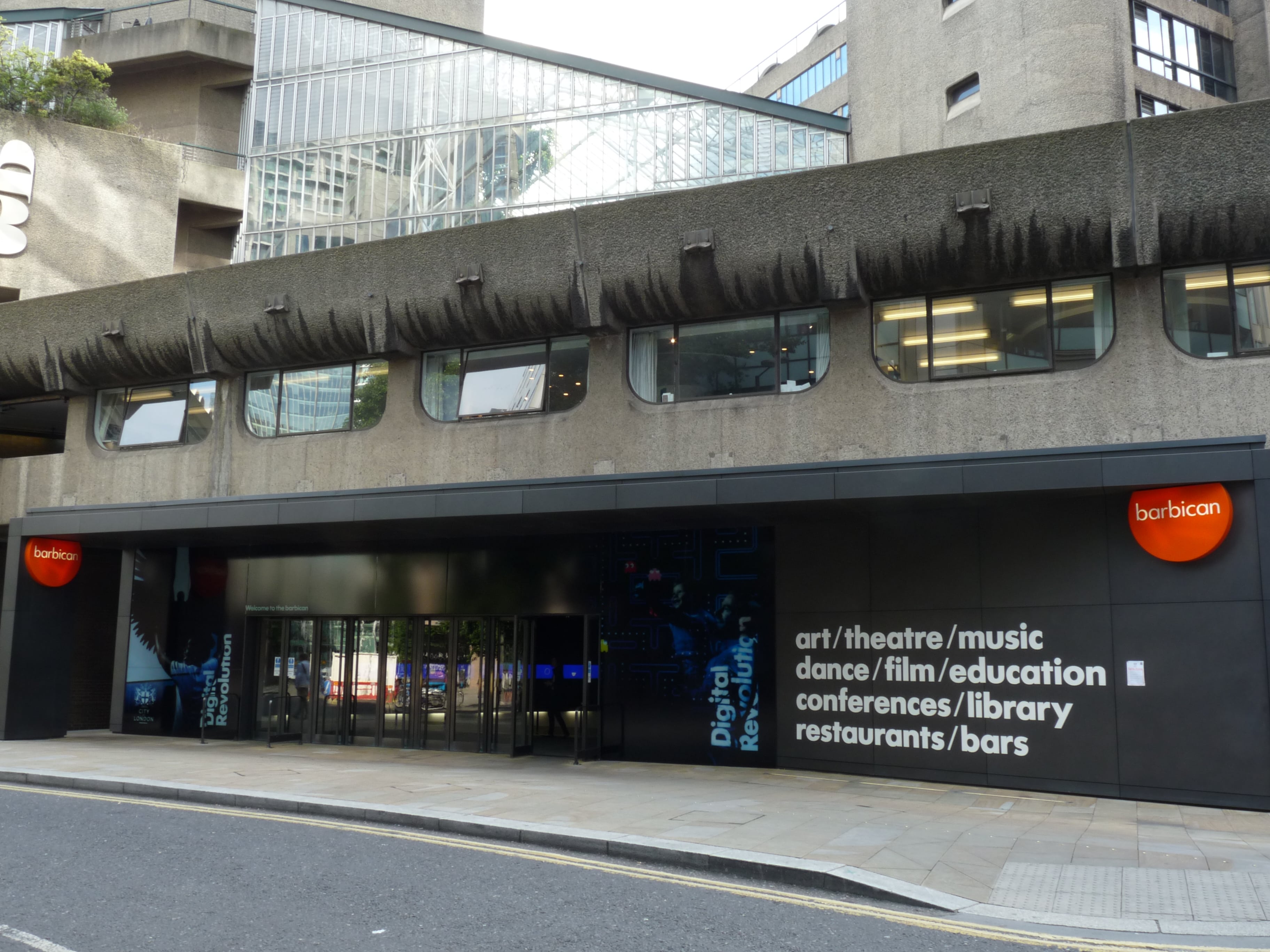
Barbican Centre
Silk St, Barbican, London EC2Y 8DS, United Kingdom
‘Barbican’ used to be the name of a street in a bustling commercial area in the ward of Cripplegate. By the end of the 19th century it was the centre of the rag trade and was home to fabric and leather merchants, furriers, glovers and a host of other tradesmen.
Your visit: Eat & drink
Head northwest on Silk St
190 ft
However, on 29 December 1940 the City of London came under the fire of the German bombers and the area around Barbican was flattened as fire swiftly spread across the warehouses. By the end of the war, only a few buildings still stood, including the damaged Church of St Giles’ Cripplegate.
Turn left onto Cromwell Pl
London Walks: The Blitz
Take the stairs
161 ft
After the Second World War, the Corporation of the City of London, the governing body of the City, sought to rebuild the commercial area known as Cripplegate ward which had been almost completely razed to the ground during the Blitz. Recognising the need for comprehensive planning after the war, the Town and Country Planning Act of 1947 enabled local authorities, such as the Corporation, to buy land in order to redevelop large areas.
Turn left onto Beech St/B100
0.2 mi
The Centre took over a decade to build and was opened by The Queen in 1982, who declared it ‘one of the wonders of the modern world’ with the building seen as a landmark in terms of its scale, cohesion and ambition. Its stunning spaces and unique location at the heart of the Barbican Estate have made it an internationally recognised venue, set within an urban landscape acknowledged as one of the most significant architectural achievements of the 20th century.
Turn right onto Aldersgate St/A1
89 ft
The word barbican origins from the Low Latin word Barbecana which referred to a fortified outpost or gateway, such as an outer defence of a city or castle or any tower situated over a gate or bridge which was used for defence purposes.
Turn left
33 ft
Turn left onto Beech St/B100
0.2 mi
T/A1
89 ft
Turn left
33 ft
Barbican tube station
Barbican, London, United Kingdom
Return to Hotel
See you next time for bits and pieces

